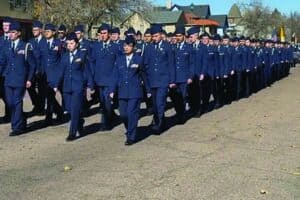Motherís Day is May 8, a tradition dating as far back as eighth century BC. Celebrations of mothers and motherhood can be traced back to the ancient Greeks and Romans, who held festivals in honor of the mother goddesses Rhea and Cybele, according to History.com.The closest precedent to our modern day celebrations is Mothering Sunday. From Britannica.com, during the Middle Ages it was customary for those who had moved away to visit their home parishes and their mothers on Laetare Sunday, the fourth Sunday of Lent. Celebrated annually, this became the tradition of Mothering Sunday in the United Kingdom.According to History.com, the Mothering Sunday tradition merged with the American Motherís Day in the 1930s and 1940s. The official Motherís Day holiday emerged in the 1900s as a result of the efforts of Anna Jarvis. Following her motherís death in 1905, Anna Jarvis conceived Motherís Day as a way of honoring the sacrifices all mothers made for their children.In May 1908, she organized the first official Motherís Day celebration in Grafton, West Virginia. Following the initial success, Jarvis resolved to see her holiday added to the national calendar. Because of her efforts and the help of the Motherís Day International Association, President Woodrow Wilson signed a measure in 1914, officially establishing the second Sunday in May as Motherís Day.Anna Jarvis had originally envisaged Motherís Day as a day to wear a white carnation as a badge and visit oneís mother or attend church services. But once Motherís Day became a national holiday, it was not long before florists, card companies and other merchants capitalized on its popularity. By the time of her death in 1948, Jarvis had disowned the holiday altogether, as she had become disgusted with how the holiday had been commercialized.While versions of Motherís Day are celebrated worldwide, traditions vary depending on the country. In Thailand, for example, Motherís Day is always celebrated in August on the birthday of the current queen, Sirikit. In Ethiopia, families gather each fall to sing songs and eat a large feast as part of Antrosht, a multi-day celebration honoring motherhood.Memorial Day ó honoring the fallen (This is a subheading for this article)Initially known as Decoration Day, Memorial Day originated in the years following the Civil War and became an official federal holiday in 1971. According to History.com, by the late 1860s, Americans in various towns and cities had begun holding springtime tributes to the countless fallen soldiers, decorating their graves with flowers and reciting prayers.History.com states that the practice of honoring those who have fallen in battle dates back thousands of years. The ancient Greeks and Romans held annual days of remembrance for loved ones (including soldiers) each year, festooning their graves with flowers and holding public festivals and feasts in their honor. In Athens, public funerals for fallen soldiers were held after each battle, with the remains of the dead on display for public mourning before a funeral procession took them to their internment in the Kerameikos, one of the cityís most prestigious cemeteries.It is unclear where this tradition actually started, as numerous communities could have independently initiated the memorial gatherings. Some records show one of the earliest Memorial Day commemorations was organized by a group of formerly enslaved people in Charleston, South Carolina, less than a month after the Confederacy surrendered in 1865. In 1966, the federal government declared Waterloo, New York, the official birthplace of Memorial Day.Even before the war ended, womenís groups across much of the South were gathering informally to decorate the graves of the Confederate dead. In April 1886, the Ladies Memorial Association of Columbus, Georgia, resolved to commemorate the fallen once a year. However, southern commemorations were rarely held on one standard day, with observations differing by state and spread out across much of the spring and early summer. Itís a tradition that continues today: Nine southern states officially recognize a Confederate Memorial Day.On May 5, 1868, Gen. John A. Logan, leader of an organization for Northern Civil War veterans, called for a nationwide day of remembrance. ìThe 30th of May,1868, is designated for the purpose of strewing with flowers, or otherwise decorating the graves of comrades who died in defense of their country during the late rebellion, and whose bodies now lie in almost every city, village and hamlet churchyard in the land,î he proclaimed.Many northern states held commemorative events and reprised the tradition in subsequent years. By 1890, each one had made Decoration Day an official state holiday. Southern states, on the other hand, continued to honor the dead on separate days until after World War I.Decoration Day originally honored only those lost while fighting in the Civil War. But during World War I, the holiday evolved to commemorate American military personnel who died in all wars, which would eventually include World War II, The Vietnam War, The Korean War and the wars in Iraq and Afghanistan.For decades, Memorial Day continued to be observed on May 30, the date Gen. Logan had selected for the first Decoration Day. But in 1968, Congress passed the Uniform Monday Holiday Act, which established Memorial Day as the last Monday in May in order to create a three-day weekend for federal employees. The same law also declared Memorial Day a federal holiday.According to loc.gov, the national observance of the holiday still takes place at Arlington National Cemetery with the placing of a wreath on the Tomb of the Unknown Soldier and the decoration of each grave with a small American flag. Protocol for flying the American flag on Memorial Day includes raising it quickly to the top of the pole at sunrise, immediately lowering it to half-staff until noon and displaying it at full staff from noon until sunset.From va.gov, to ensure the sacrifices of Americaís fallen heroes are never forgotten, the National Moment of Remembrance encourages all Americans to pause wherever they are at 3 p.m. local time on Memorial Day for a minute of silence to remember and honor those who have died in service to the nation.






